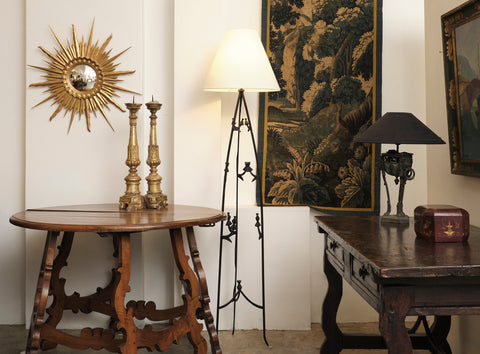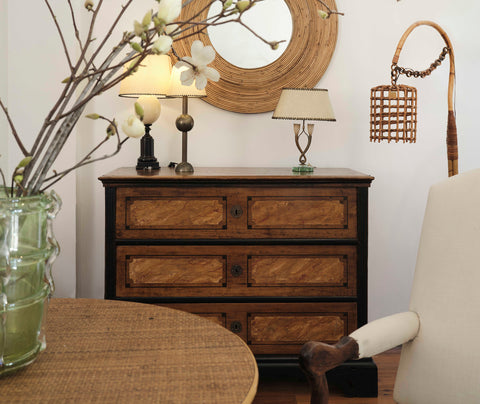This month we profile Chinoiserie, an enduring design aesthetic adds whimsy and softness to interiors.

late 19th Century Queen Anne Style Black/Green Chinoiserie Commode
The name seemingly insinuating that it originated in the Far East, however this particular style was created in Europe. The word itself, pronounced (shen-wah-she-ree) coming from the French word “chinois” meaning Chinese. An interpretation of what Asian art and design would have been. Chinoiserie was made prominent in the 17th and 18th century, however, its influence began in the earlier 14th century when trade routes between China and Europe began. The rise of imported Chinese goods heavily inspired the creation of Chinoiserie beginning in Italy with printed fabrics, silks in particular. The extravagant luxury quickly became widely spread and highly regarded throughout Europe, especially amongst members of the aristocracy.

A Handsome and Modern take on Chinoiserie by Peter Durham
Chinoiserie was used in conjunction with Rococo and Baroque styles, with the use of gliding and lacquering adding exponential detail giving every piece characteristic depth. Common motifs include oriental figures, dragons, garden vignettes and pagodas, with an intricate range of colours, however, most prominently with the use of blue and white.

The patterns and exaggerated textures of Chinoiserie have been displayed in many ways over the centuries from porcelains, to wallpaper, curtains and cabinetry to elaborate folding screens which were a popular expression. Still to this day, it is commonly used in the design world and is truly timeless.
words by Christina Annaheim
Browse our range of antique art & objects

.

